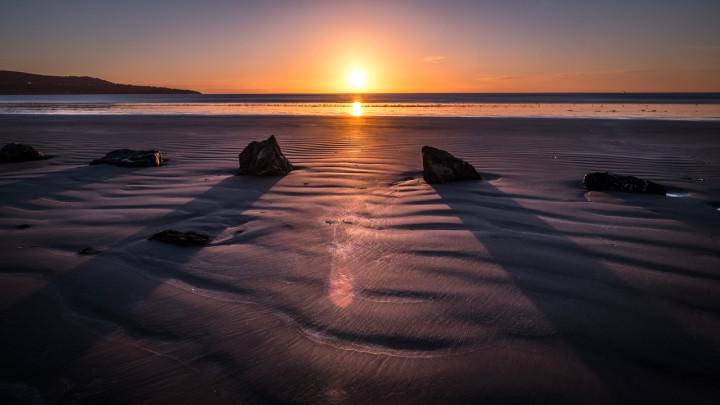


In the northern hemisphere, we celebrate the summer solstice, or midsummer, on June 21st, marking the longest day of the year. Throughout history, this time of year has been celebrated with different customs, so I wanted to share a few interesting facts. Special thanks to tour guide Justine Murphy for her research on this subject.
The sun rises and sets at different places on the horizon, depending on the time of year. If you were to look at it every morning, the sunrise would appear to move slightly to the left or the right along the horizon – until it eventually stops and goes in the other direction. These points where the sun stops moving along the horizon coincide with the summer and winter solstices. The name solstice means standing sun, taken from the Latin “sol” (sun) and “sistere” (to stand still).
Traditionally, bonfires were lit on all the high parts of the land across Ireland to mark the solstice. People would even leap through the flames for good luck! ‘Bonfire’ comes from ‘bonefire’, as the bones of dead animals were often added to the pile to make the fires crackle and spit. The ashes were sometimes scattered over crops, as people believed this would help lead to a good harvest.
‘Goody’ is an Irish dessert-like dish that was traditionally eaten around the summer solstice, often prepared near bonfires. The dish is made by boiling bread in milk with sugar and spices. Yum!
The summer solstice inspired the design of some ancient architectural marvels. Grange Stone Circle at Lough Gur in Limerick is the biggest stone circle in Ireland. It’s made up of 113 stones in total and is believed to date back to about 2200 BC. Grange is aligned to the solstice so that, at sunrise at this time of year, the light shines directly through its entrance stones. Stonehenge in England is another famous example of this type of structure.
Midsummer and the summer solstice are marked in different ways all across Europe. In some countries, it is celebrated from sunset on June 23rd and known as St John’s Eve, as the following day is the Feast of Saint John.
In 2020, the Creative Residency @ Richmond Barracks appointed Dublin’s first Historian-in-Residence for Children, Dervilia Roche.
The Creative Residency programme is made by Dublin City Council Culture Company.
The Historian-in-Residence for Children Creative Residency @ Richmond Barracks is a partnership with Dublin City Council Culture Company and Dublin City Libraries.
Posted 21 Meitheamh 2021